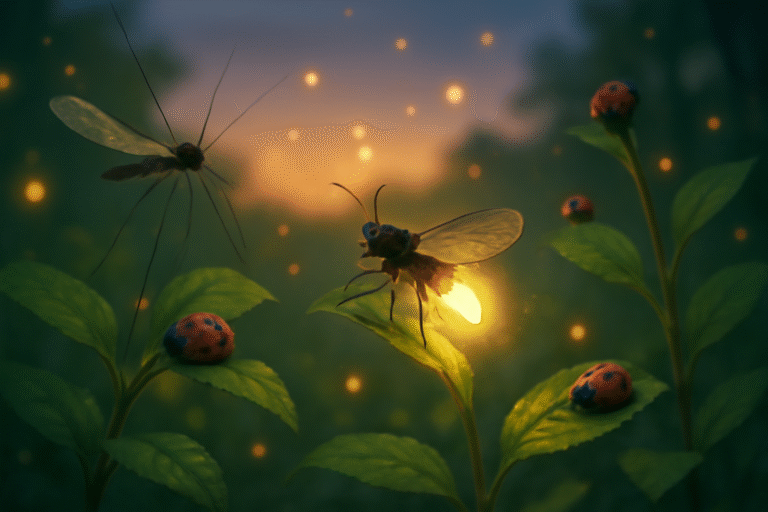The Secrets of Sleep Across the Animal Kingdom: How Different Creatures Rest and Recharge

What Is REM Sleep and Why Is It Important?
Rapid Eye Movement (REM) sleep is a specialized sleep stage distinguished by intense brain activity, rapid eye movements, and vivid dreams. It plays several critical roles including:
- Memory consolidation and learning: REM sleep helps transform short-term memories into long-lasting knowledge by reinforcing neural connections.
- Emotional regulation: It assists in processing emotions and stress, promoting mental and emotional balance.
- Brain development: In young animals and humans, REM supports the growth and maturation of the nervous system.
- Physical brain repair: REM promotes cellular cleanup and recovery processes essential for brain health.
- Restoration and alertness: Quality REM sleep helps animals wake up refreshed and cognitively sharp.
Without enough REM sleep, cognitive functions decline, emotional instability increases, and overall health deteriorates, making it vital across the animal kingdom. Typically, animals need anywhere from a few minutes to several hours of REM sleep per day depending on species and lifestyle.
Birds: Balancing Sleep and Safety in a Moving World
Birds exhibit remarkable adaptations allowing them to sleep safely on branches, even when the tree sways in the wind. One key to this is a tendon-locking mechanism in their legs, which automatically tightens their grip around a perch when they settle down, preventing falls without muscular effort.
Moreover, many bird species utilize unihemispheric slow-wave sleep, meaning they rest one half of their brain while the other half remains alert. This allows birds to stay vigilant to predators and environmental dangers while still obtaining needed rest. Their sleep often occurs in short naps rather than long continuous periods, facilitating quick responsiveness.
Birds typically sleep about 10 to 12 hours per day but their REM sleep can be very brief, sometimes only seconds within those periods. Species like ostriches can sleep deeply with eyes open. Birds also perform microsleeps during migration without apparent ill effects.
Large Herbivores: Horses, Cows, and the Art of Sleeping Standing Up
For large animals like horses and cows, lying down with their heavy bodies can be challenging and vulnerable. Enter the stay apparatus—a sophisticated arrangement of tendons, ligaments, and muscles that locks their leg joints in place. This allows them to conserve energy by resting in a standing position without effort.
While these herbivores can doze lightly standing up, they still require brief periods lying down to enter deep REM sleep, which demands complete muscle relaxation. They typically spend only short times lying down to achieve this, balancing comfort with safety in open environments where predators roam.
Sleep durations vary: horses average about 2.5 to 3 hours of total sleep daily, with cows around 4 hours. REM sleep is only a fraction of that, usually less than an hour, leading to short lying down periods each day. Animals like giraffes sleep even less, averaging just 4.5 hours including minimal REM sleep between 10 to 60 minutes.
Cats and Dogs: Masters of Polyphasic Sleep and Dreamers at Heart
Both cats and dogs are polyphasic sleepers, meaning they sleep multiple times throughout the day and night in naps of various lengths. Cats spend a lot of time—up to 12.5 to 16 hours daily—in various stages of sleep, mostly light sleep, finely attuned to sudden activity or threats. Dogs similarly sleep about 10 to 14 hours daily, cycling through light sleep and REM sleep, often dreaming during their REM phases, evidenced by twitching paws and vocalizations.
Sleep and REM needs are influenced by age and breed; puppies and kittens may sleep even more, up to 20 hours per day.
Marine Mammals: Sleeping While Swimming
Marine mammals such as dolphins and whales have evolved to sleep with only one half of their brain at a time (unihemispheric sleep), enabling them to continue swimming, surface for air, and watch for predators even while resting. This unique adaptation is vital for survival in their aquatic habitats where continuous movement and breathing are necessary.
Dolphins can maintain unihemispheric sleep for up to 2 hours at a time, cycling through light and deeper rest. Total daily rest may range from 6 to 10 hours but involves alternating brain hemisphere activation.
Reptiles and Amphibians: Variable Rest States in Cold-Blooded Creatures
Reptiles and amphibians do not show classic REM sleep but enter various rest states marked by reduced activity and responsiveness. Sleep time can vary widely with temperature and environmental conditions. For example, some reptiles like the Australian bearded dragon display REM-like and NREM-like states for several hours daily.
Amphibians often stay inactive for varying intervals that can last hours, though vigilance to threats remains high. Many enter brumation, a hibernation-like state, during cold weather to conserve energy over weeks or months.
Fish: Sleep-Like States Underwater
Fish exhibit varied forms of rest often described as sleep-like states but lack mammalian brain wave patterns typical of sleep. They rest by reducing movement and responsiveness. Duration varies broadly among species, from short daily inactive periods to prolonged inactivity in some benthic species. Some fish rest for a few hours nightly in quiet locations to avoid predators.
Insects: Short Rest Cycles and Torpor
Insects do not sleep in the mammalian sense but enter periods of torpor, characterized by decreased movement and metabolic activity. For example, worker ants may take up to 250 power naps daily, though each nap lasts only about a minute, totaling 4-5 hours of rest. Fruit flies show sleep-like behavioral states lasting minutes to hours, aiding memory and health.
Unique Phenomena: Hibernation, Torpor, and Beyond
Besides daily sleep, many animals adopt seasonal or situational adaptations:
- Hibernation: Extended deep inactivity during winter months with drastically reduced metabolism, lasting weeks or months (e.g., bears, bats, ground squirrels).
- Torpor: Shorter bouts of metabolic and activity reduction during adverse conditions (e.g., hummingbirds overnight).
- Estivation: Dormancy to survive hot or dry spells in amphibians and reptiles.
These states complement sleep by conserving energy and enhancing survival under extreme conditions.
Evolutionary and Environmental Drivers of Sleep Diversity
The varied sleep strategies animals use are shaped by evolutionary forces like predation risk, ecological niche, body size, and metabolic rates. Prey animals often have fragmented sleep cycles and built-in alertness to avoid danger, whereas predators with fewer threats can afford longer and deeper sleeps. Climate, food availability, and social behavior further influence how and when animals sleep.
Summary Table of Average Sleep Durations and REM Needs in Selected Animals
| Animal | Average Total Sleep (hours/day) | REM Sleep (approximate) | Sleep Notes |
|---|---|---|---|
| Humans | 7-9 | 1.5-2 hours | Monophasic sleep |
| Birds | 10-12 | Seconds per REM bout (short cycles) | Unihemispheric sleep, naps |
| Horses | 2.5-3 | <1 hour | Standing rest plus brief lying down REM |
| Cows | ~4 | Less than 1 hour | Similar to horses |
| Cats | 12.5-16 | Several hours | Polyphasic, frequent napping |
| Dogs | 10-14 | Several hours | Polyphasic, dreaming behavior |
| Dolphins | 6-10 | Unihemispheric REM-like | Half-brain sleep, swimming maintained |
| Whales | Similar to dolphins | Similar | Similar brain hemispheric sleep |
| Elephants | 3-4 | Very little, ~1 hour or less | Minimal REM, short sleep duration |
| Rodents (e.g. mice) | 12-14 | Proportionally high | Long, deep sleep cycles |
| Reptiles | Variable, 5-10? | No classic REM | Brumation in cold |
| Amphibians | Variable | No classic REM | High alertness even when resting |
| Fish | Variable hours | No REM-like | Reduced activity/rest states |
| Insects (e.g. ants) | ~4-5 (power naps total) | No REM-like | Short, frequent naps |
Conclusion
Sleep across the animal kingdom is a study in adaptation and survival. From birds gripping moving branches with locked tendons to horses dozing while standing, marine mammals resting half their brains at a time, and insects entering torpor, nature has crafted ingenious strategies that balance rest with the demands of life. Understanding these profound differences enriches our appreciation of animal biology and underscores the universal importance of sleep in all its forms.






